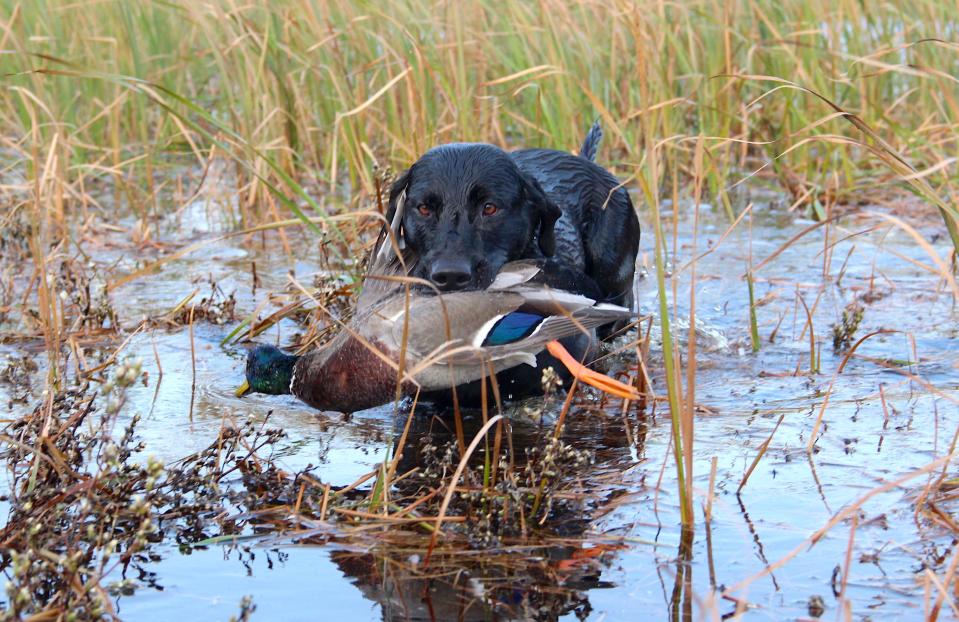Natural Resources Board approves favorable 2023 waterfowl hunting regulations
Waterfowl hunters in Wisconsin will once again be offered the most liberal regulations allowed under federal guidelines when the state's 2023 duck and goose seasons commence in September.
The rules will include a 60-day duck hunting season in each zone with a six-bird daily bag limit.
The details were part of the 2023 migratory bird season framework presented by the Department of Natural Resources; the Natural Resources Board unanimously approved the package at its April 12 board meeting in Madison.
More: Outdoors calendar
The regulations were developed by using the most current scientific data as well as input from the public, conservation and hunting groups and results from a waterfowl hunter survey, according to Taylor Finger, DNR game bird ecologist. The agency received 500 comments in the public input process, Finger said.
“We used everything in our toolbox to collect public input – in-person meetings, virtual meetings and expanded online outreach – to ensure engagement with anyone interested in migratory bird management," Finger said.
The 2023 rules will be very familiar to those who hunted in the last couple of seasons.
The state is split into three geographical zones: north, south and open water.
The first hunts open in September with the early Canada Goose (Sept. 1 to 15) and early Teal seasons (Sept. 1 to 9). A youth waterfowl hunt will be held Sept. 16 and 17 statewide.
Then the regular regular duck seasons open Sept. 23 in the north zone, Sept. 30 in the south and Oct. 14 in the open water. The north runs continuously through Nov. 21, the open water runs continuously through Dec. 12 while the south is split Sept. 30 to Oct. 8 and Oct. 14 to Dec. 3.
The daily bag limit in each zone can include no more than four mallards (of which two may be hens), three wood ducks, two canvasbacks, two redheads, two black ducks and one pintail.

The regular goose seasons begin Sept. 16 in each zone with a daily bag limit of three geese.
The 2023 regulations include some changes, including an update in the definition of the open water zone boundary. It now incorporates adjacent rooted vegetation, floating cattail mats and Green Bay’s Long Tail and Little Tail points as part of the mainland shore.
It also modified the regulations for the open water restrictions on approved inland open water hunting lakes by decreasing the distance from shore to 500 feet.
And the Mississippi River Canada goose hunting season will run concurrently with the south zone goose regulations in 2023, rather than opening with the duck season.
The DNR plans to finalize the 2024 and 2025 waterfowl hunting regulations later this year in a permanent rule. The move is part of a process announced in February intended to create more consistency for hunters across seasons and align Wisconsin rules with the five-year periods used by the U.S. Fish and Wildlife Service for setting zones. It would also allow DNR staff to spend more time to execute the waterfowl plan and less on setting regulations, Finger said.
The next set of regulations would cover 2026-30.
To view details of the 2023 Wisconsin waterfowl regulations, visit dnr.wi.gov.
County deer meetings start Tuesday
The Department of Natural Resources and Wisconsin Conservation Congress are encouraging the public to attend a County Deer Advisory Council (CDAC) meeting virtually or in person this spring.
The meetings will be held across the state April 24 to May 4. In Milwaukee County, the meeting is at 7 p.m. April 27 at the DNR Milwaukee Service Center, 1027 West St. Paul Ave., Milwaukee, while the Waukesha County meeting is 6 p.m. April 25 at the DNR Service Center, 141 NW Barstow St., Waukesha.
The county deer councils are chaired by a local WCC delegate and made up of volunteers that represent various stakeholder groups. Councils meet annually to provide input and recommendations to the DNR on deer management within their area. The CDACs review current county data on fawn to doe ratios, harvest trends, herd health, deer impacts on agriculture, forest health, economics and vehicular collisions as well as the deer hunter experience.
Information on each county’s harvest and population metrics can be found on the DNR’s website in the Wisconsin Deer Metrics System.
CDAC recommendations are reviewed and set annually so they can be adjusted as needed in response to the previous year’s deer harvest, winter severity and other factors.
To see a complete list of meeting sites, dates and times as well as details to participate via Zoom, visit dnr.wi.gov.
Following the CDAC process, the DNR will bring recommendations for the 2023 hunting season to the Natural Resources Board for review on June 21.
Our subscribers make this reporting possible. Please consider supporting local journalism by subscribing to the Journal Sentinel at jsonline.com/deal.
DOWNLOAD THE APP: Get the latest news, sports and more
This article originally appeared on Milwaukee Journal Sentinel: Natural Resources Board sets 2023 Wisconsin waterfowl hunting seasons

